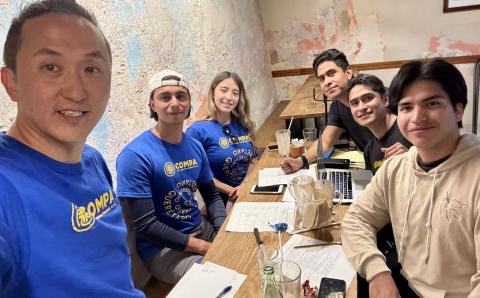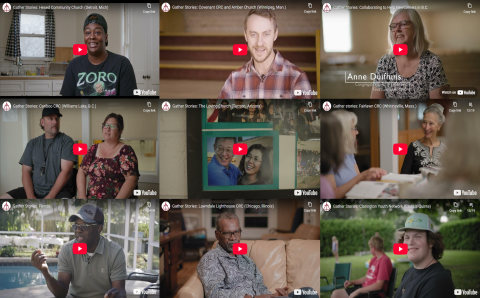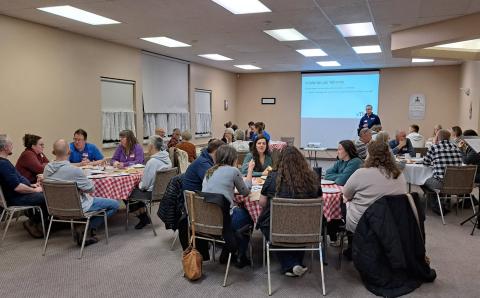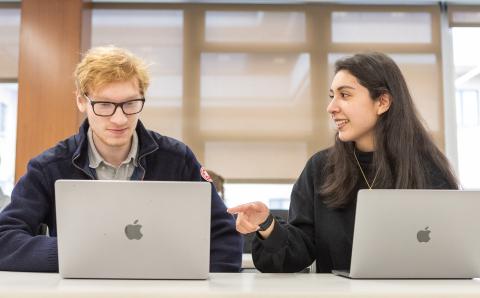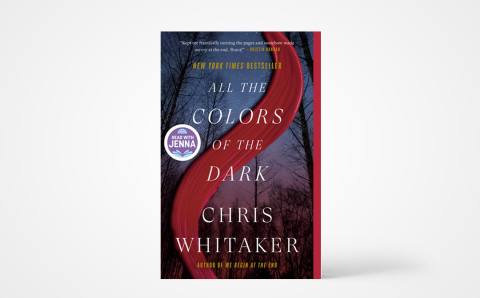As I write this article, I’m wearing the handmade friendship bracelet Maddi gave me. She made it herself. She even tied it on my wrist for me. It’s been with me ever since.
In my sermon a few Sundays ago, I made a reference to the WWJD (What Would Jesus Do?) bracelets that some Christians wore back in the 1990s. After the service, Maddi asked me what my favorite colors were. I told her they were orange and blue. The next Sunday she gifted me with a handmade WWJD friendship bracelet with orange lettering on a blue background.
Maddi is a teenage girl in my congregation. Last year she and her sister, Anna, both made profession of faith. They weren’t born into this church family; they and their parents joined years ago through a series of unlikely and God-ordained circumstances. Now Maddi and her family come faithfully even though their home is a 40-minute drive away.
I do everything wearing this bracelet, including all of my official acts of ministry. I’ve preached, raised my hands in benediction, and baptized wearing this bracelet. I’ve served communion and officiated at a funeral wearing this bracelet. Whenever I see it I’m reminded of a few things.
First, I’m reminded that people are actually listening to my sermons. Incredibly, people show up week after week to hear what I have to say about the Bible. This is an awesome opportunity as well as an awesome responsibility. I need to make sure that my sermons are on message and accurately reflect what the Scripture passage for the week is saying to God’s people today.
Second, I’m reminded that people of all ages and stages of spiritual development are part of this congregation. My ministry isn’t just for the officebearers or older members who have been coming to church for decades. It’s also for children, teens, and new believers. Ministering to a diverse group can be tough—as much as I want to encourage and challenge the more mature members, I also want to make sure that I don’t lose members like Maddi.
Third, when I see the bracelet I’m reminded that I have a responsibility to be an example of what a Christ-follower looks like. Younger members are watching and listening to those of us who are older and especially to those of us who are leaders. They want to know if we really practice what we preach. They want to see how we react when life gets hard. Do we lose our cool, make a mess, or fail morally? Or do we respond with Christ-like perseverance, humility, and a willingness to make sacrifices so that others can benefit? I want to be like Jesus regardless of who is watching or listening, but the fact that young people like Maddi are watching and listening makes me especially motivated to be as Christlike as possible. I don’t want to do anything that would cause young ones to stumble.
Finally, the bracelet reminds me that I am not alone in my spiritual journey. Maddi, though much younger than I, is my sister in Christ. And the fact that she cared enough to make me a friendship bracelet tells me that she considers me—a bald, middle-aged pastor—to be her friend. That is truly amazing. I’m so glad that I have friends along the way on my spiritual journey. I can encourage them, and they can encourage me.
Discussion Questions:
- Do you or did you have a WWJD bracelet or something else on you to remind you of a spiritual insight? What is that spiritual insight?
- How well do your local church’s ministries meet the different needs of people at various spiritual stages in the congregation?
- How can we help each other, as well as our church leaders, to be better models of Christ-likeness for our youth?
- How can we make room or create opportunities for our youth to minister and serve the older generations?
About the Author
Andrew de Gelder is the lead pastor at Aylmer Christian Reformed Church in Ontario, Canada.


